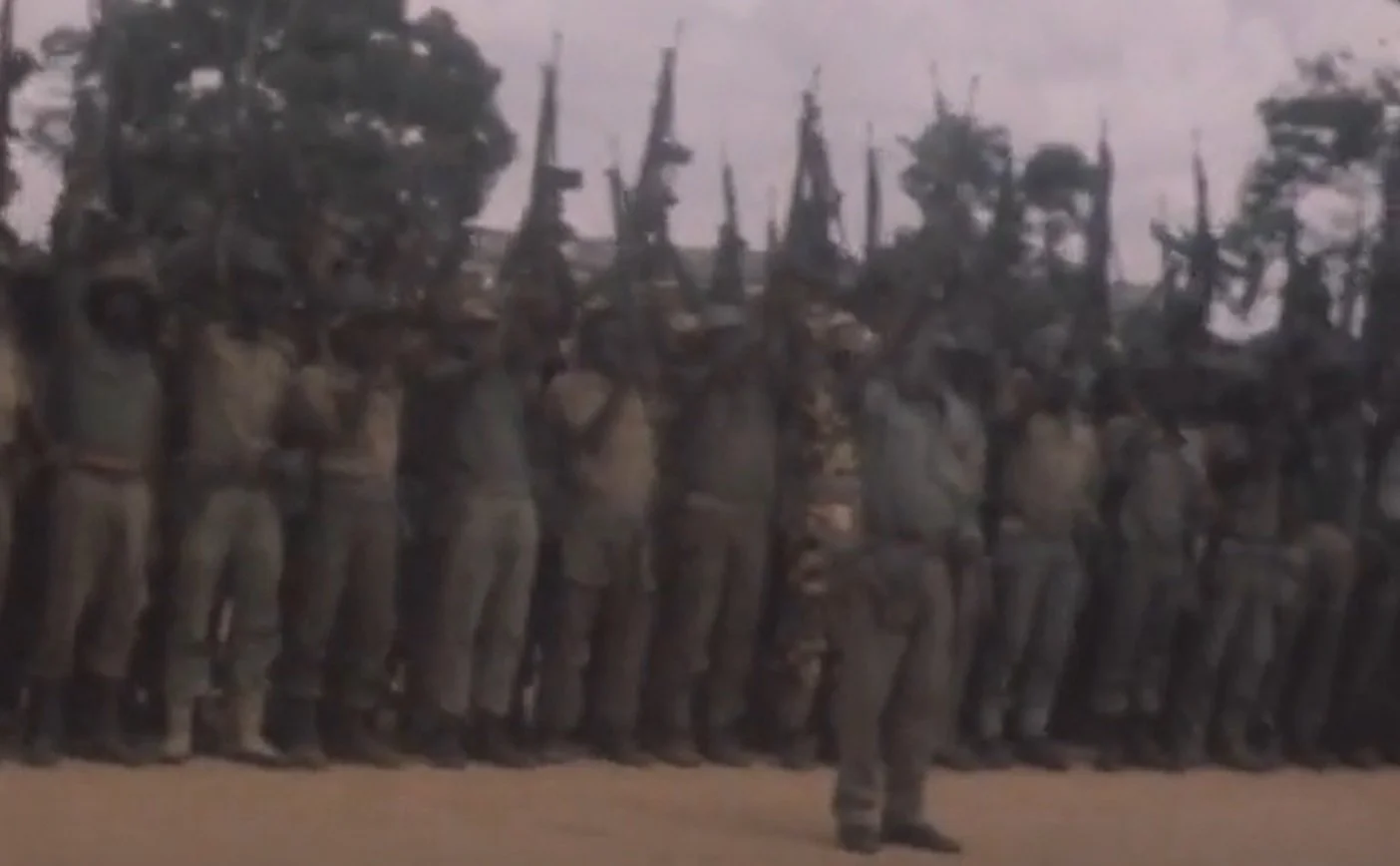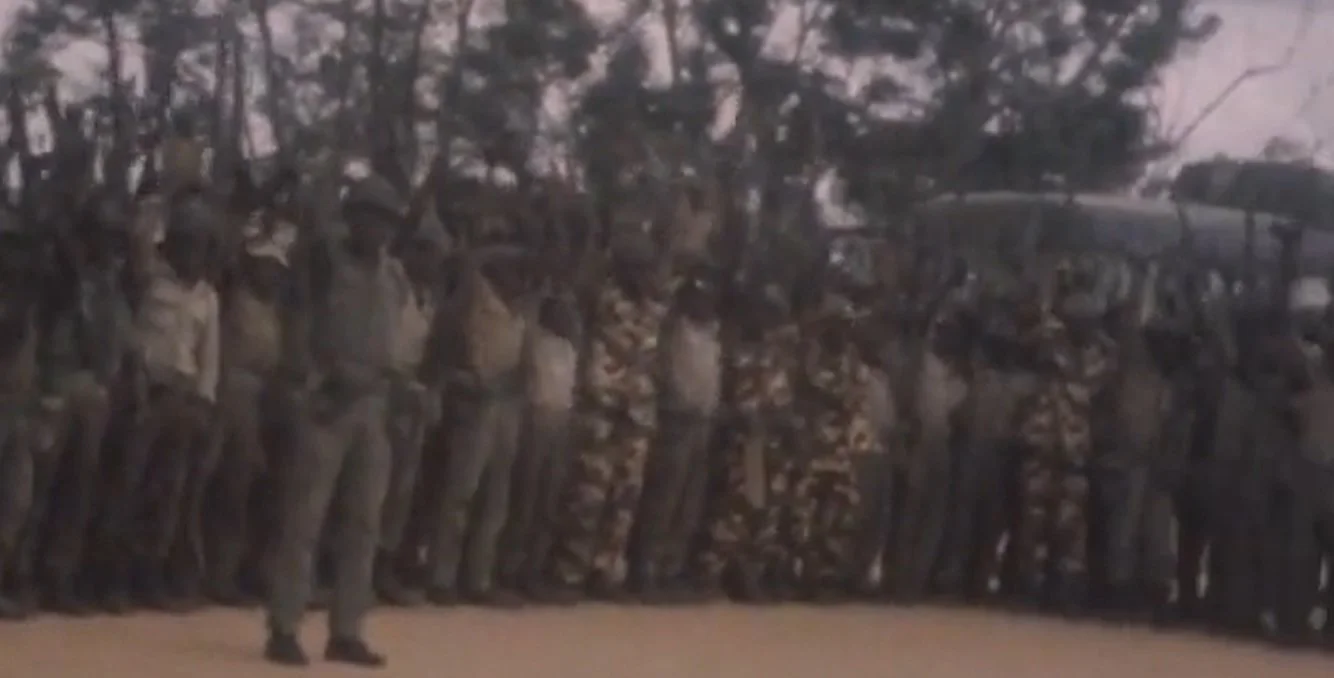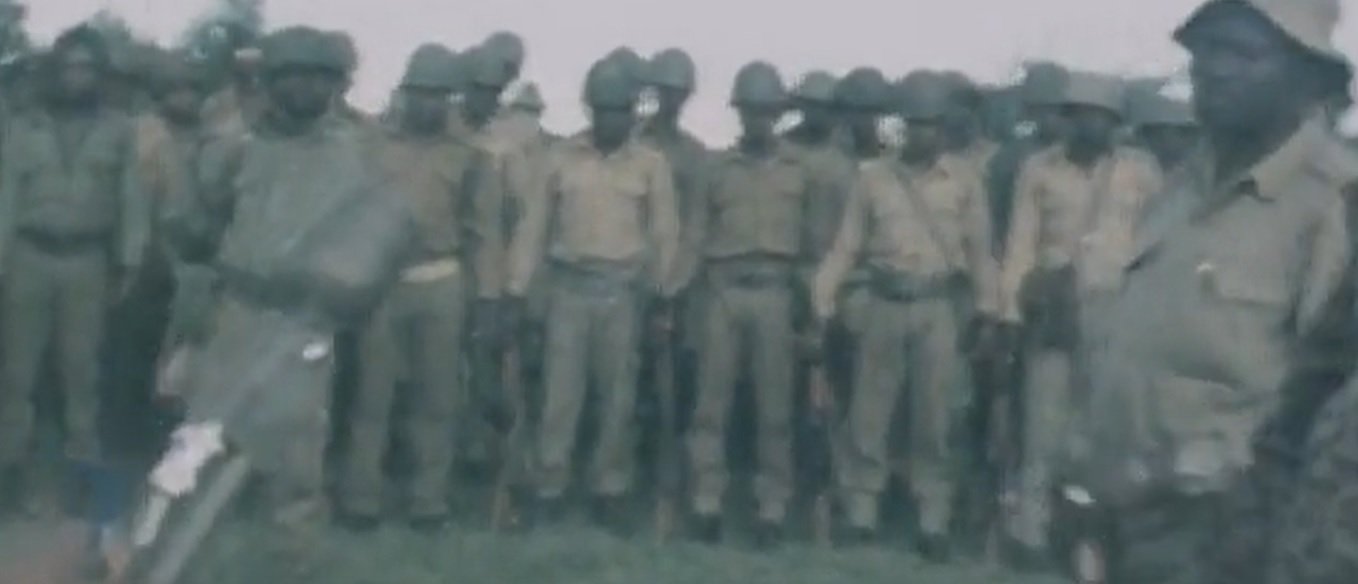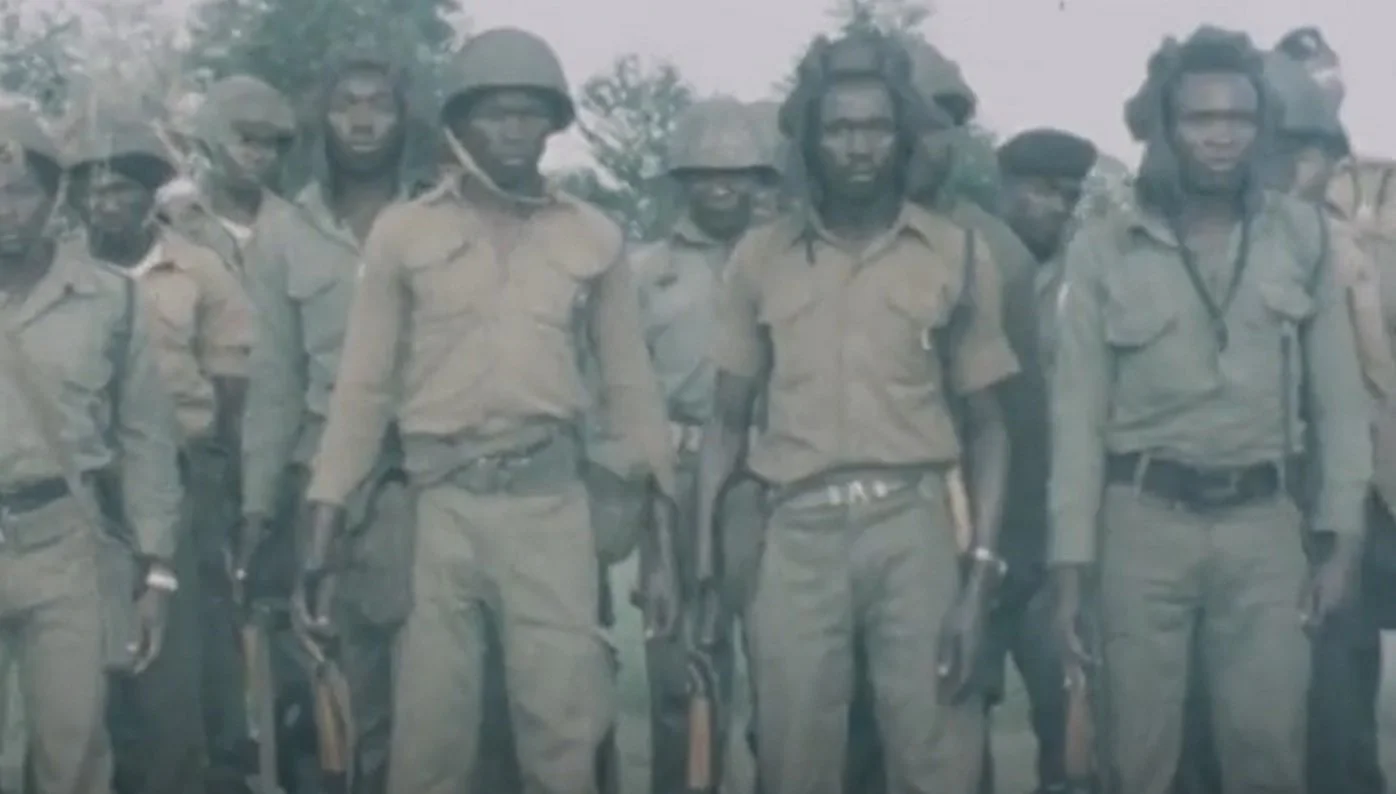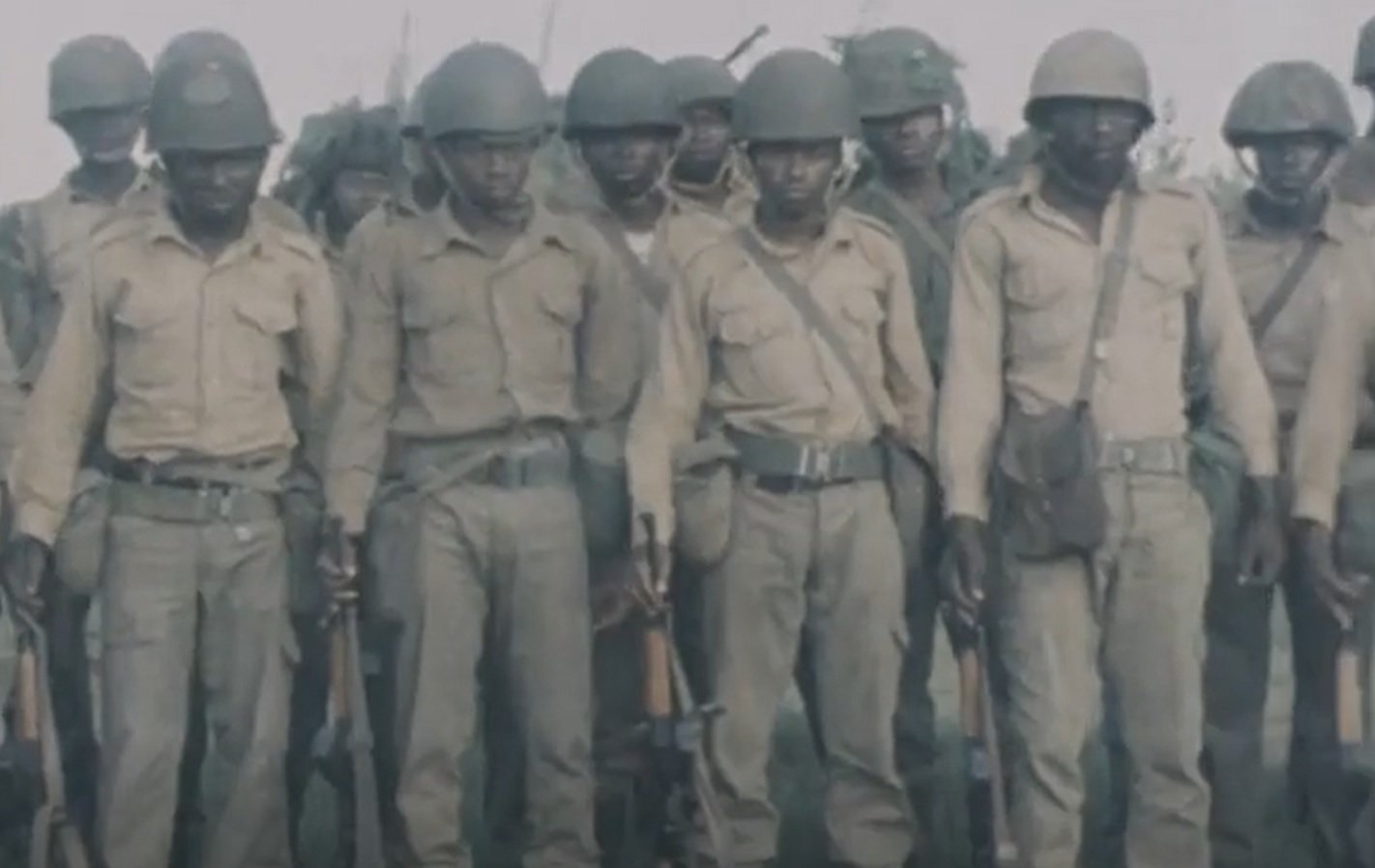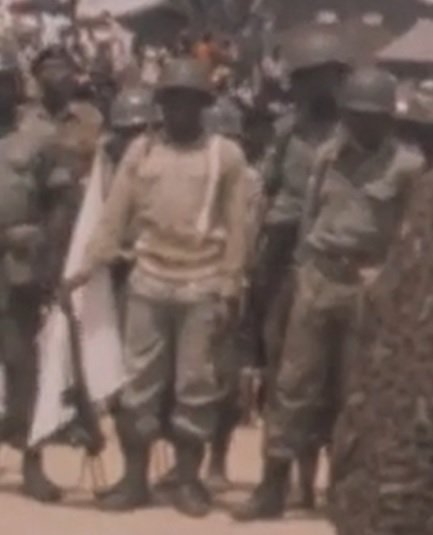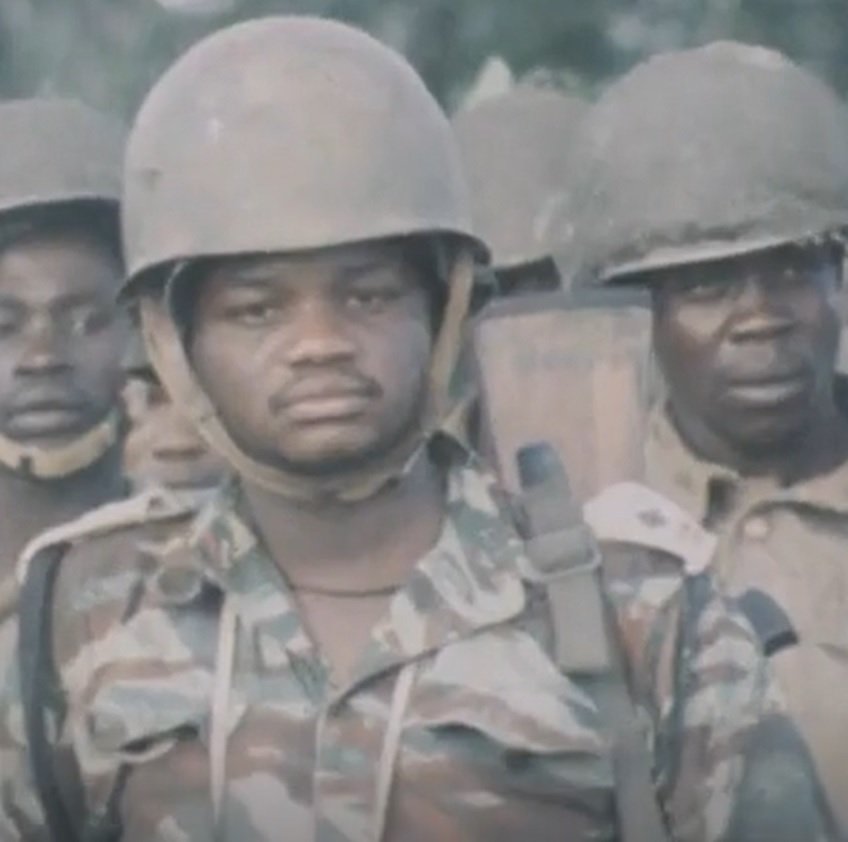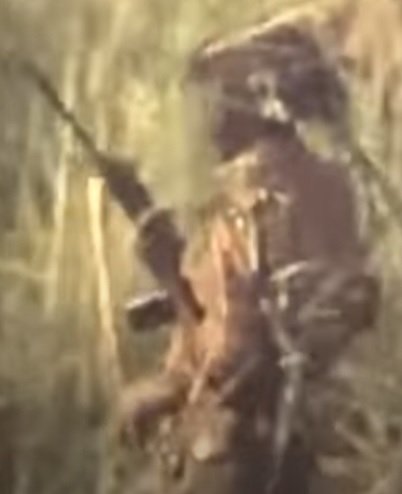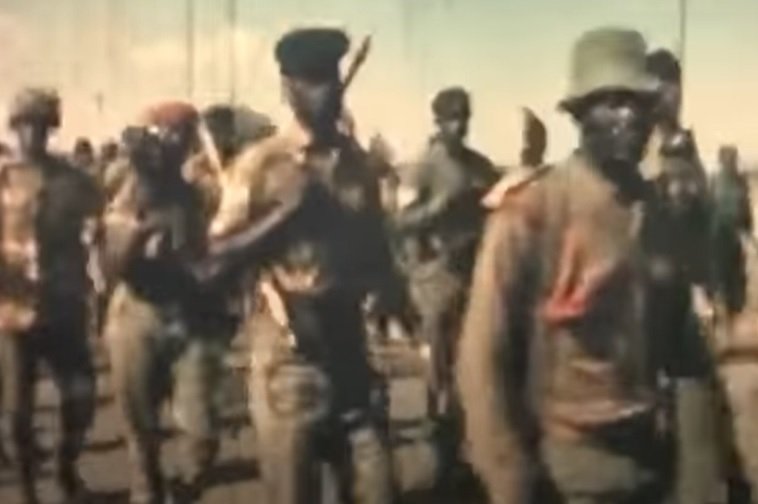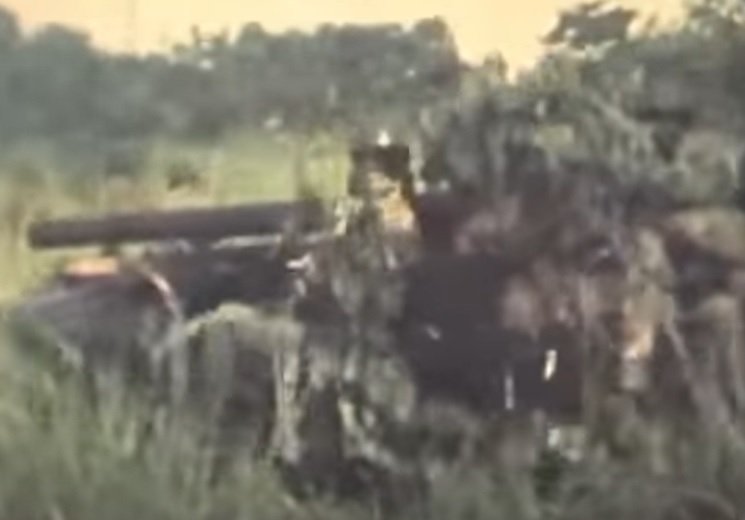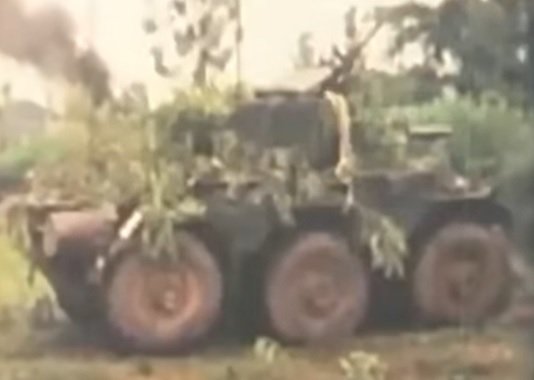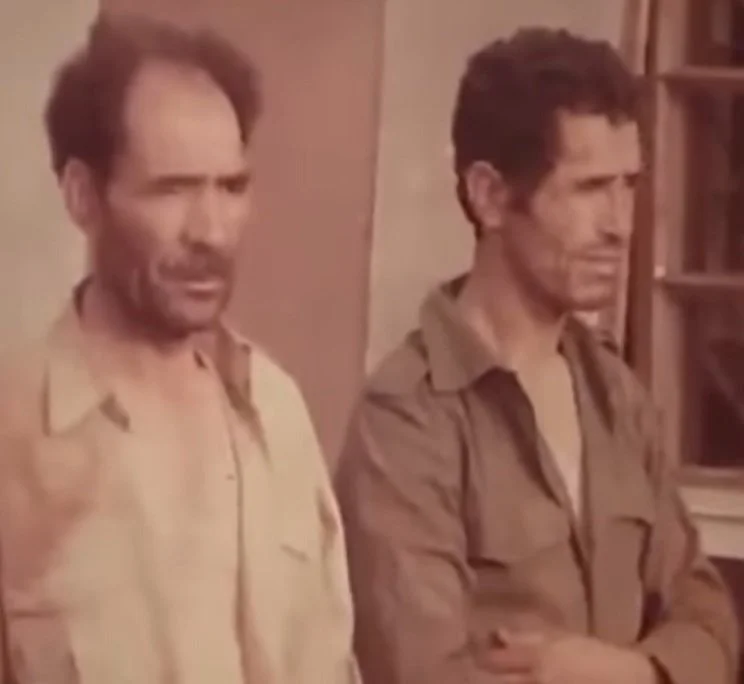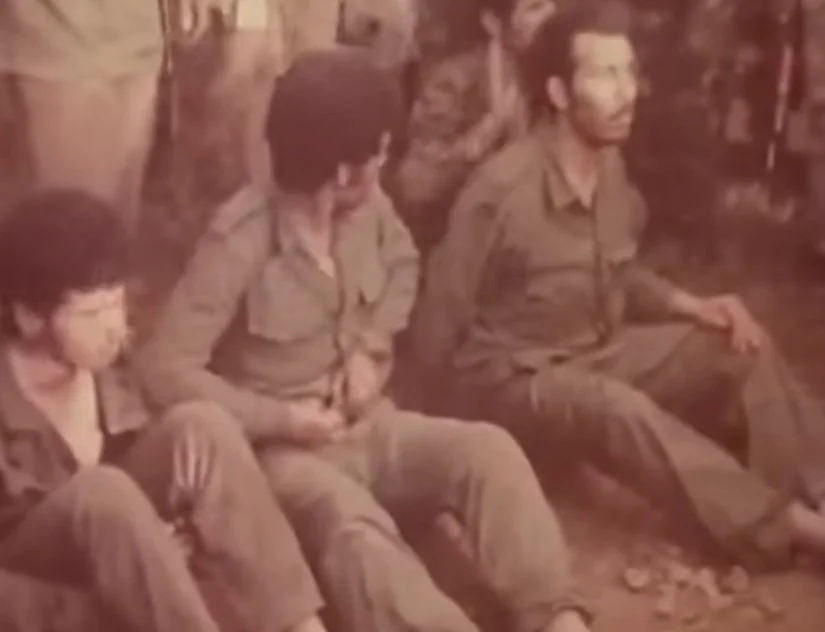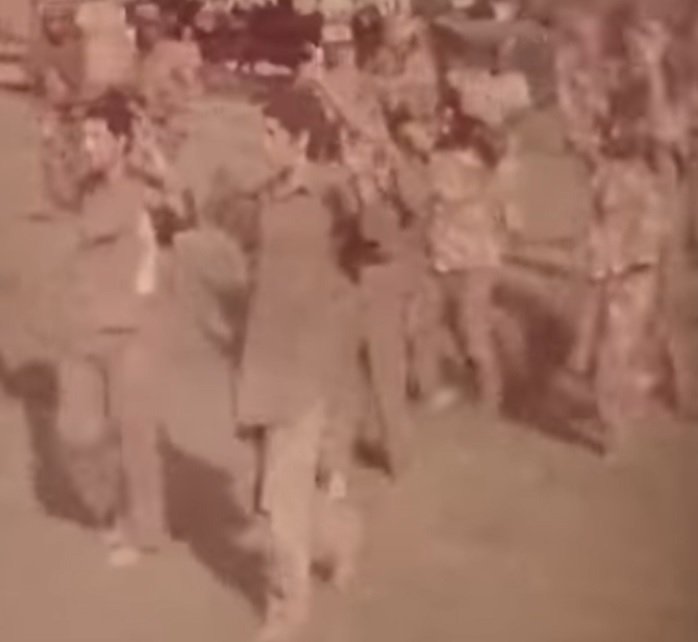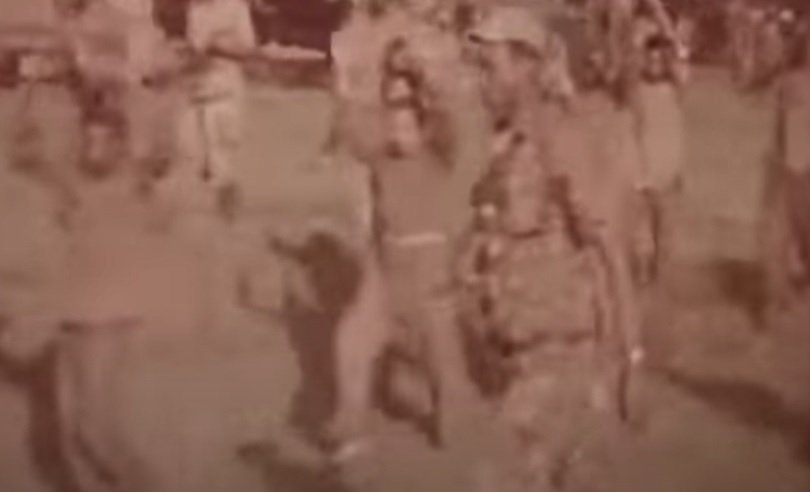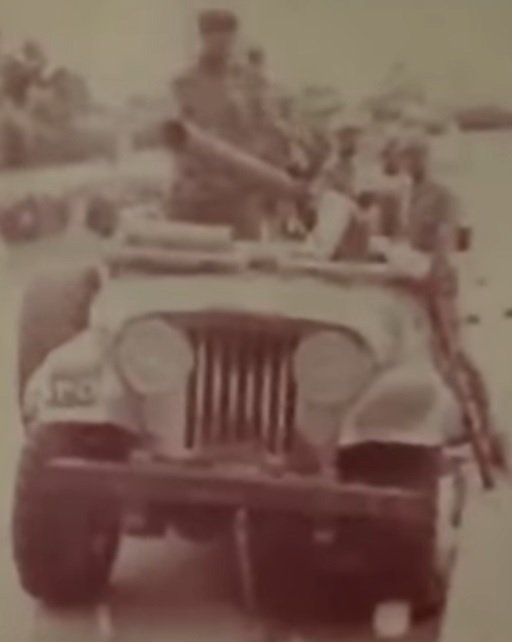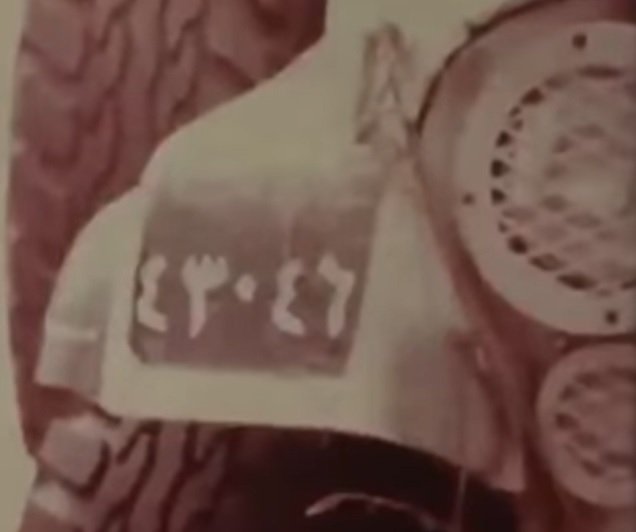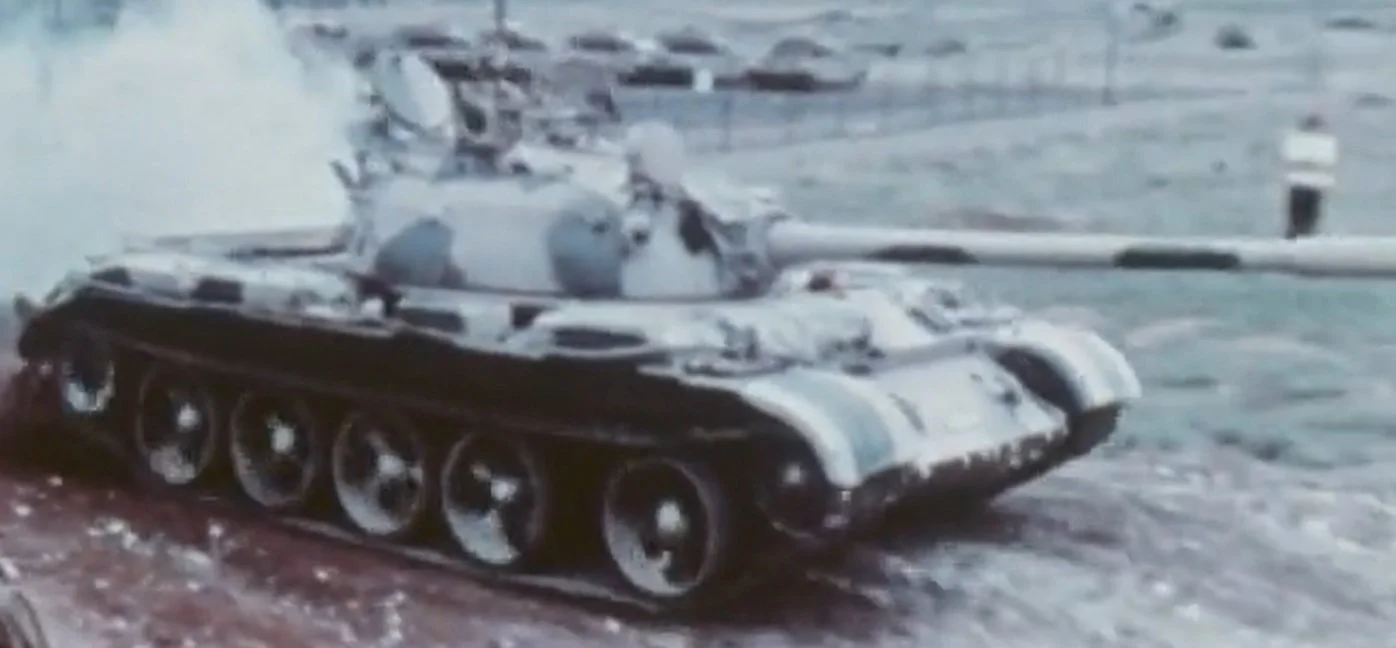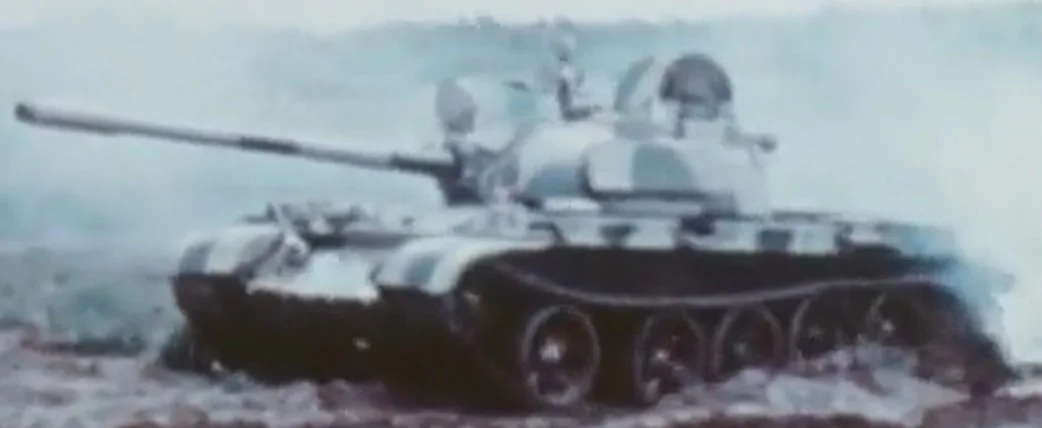SOME NOTES ON THE Ugandan ARMY, 1978-1979
Introduction.
The original purpose of my other page about the Ugandan army was to provide a description of its appearance during the Kagera War. I then got somewhat bogged down in the exact details of the Marine Regiment’s dress uniform, the number plates seen on military police Toyotas, and so on. So, now, this page will be a description of the Ugandans in the Kagera War, and nothing else.
This page is functionally an appendix to the other one, and the reader should go there for particulars of unit distinctions, vehicle insignia, etc.
Footage of the Ugandan army during the war is hard to come by, and of course I run the risk here of generalising too largely from too few examples.
The soldiers.
The men seem to have presented a rather businesslike appearance during the war. One can see a few stable belts and lanyards but, in the main, everyone is dressed soberly and practically — and in uniform, without civilian items. Very little camouflage is in evidence. Beyond this, it’s hard to say much, as no doubt the finer details (armament, camouflage patterns available, etc.) would have varied between units — and, for all this, see the previous page. The men in the clearer footage are very light on belt equipment, but they’re behind the lines listening to Amin harangue them, and perhaps when actually in the field they had fuller equipment, like the men in the “Vita vya Kagera” film, of which I have only a very low-quality copy. The AK pouches seem to be locally made, and not standardised.
The vehicles.
Please consult the other page for details about their paintwork and markings. Vehicles are often seen in wartime footage heavily camouflaged with natural foliage.
The Libyans.
These are rather elusive fellows, rarely seen in the source material.
A well-known photograph (which I don’t reproduce here, for copyright reasons) shows Amin reviewing a handsome Libyan unit at Entebbe airport. These men wear British “turtle” helmets, Egyptian-style two-tone blob camouflage and black boots, with pattern 58 webbing. Helmets are mostly plain (tan?) but a couple have nets or are crudely spraypainted in dots of a second colour.
“Vita vya Kagera” has brief footage of what seems to be Libyan prisoners. They dress in plain fatigues, with an M65 style jacket, all mostly various shades of olive-green, but a few seem to have camouflage jackets or trousers, of an utterly indecipherable pattern. A photo in Avirgan & Honey (between 76-77) shows Libyan prisoners in the same attire. One can distantly see brushstroke camouflage in background figures, though these could be their Tanzanian guards. The Tanzania-Uganda War in Pictures by Mmbando contains several photos of Libyans, but they’re all either stripped to the waist, or dead, and so of fairly little use. One cadaver is wearing camouflage of an indecipherable pattern.
One piece of footage lingers on a horribly shot-through corpse (I decline to show this here), seemingly of a Libyan, wearing jacket and trousers in what I think is the German “swamp pattern”, but I’m not certain.
Rwehururu describes the Libyans he saw at Sanje, c. early February 1978, as unsuitably dressed, but he’s unfortunately vague on the details (p. 112). He calls the Libyans “desert commandos” and says “their clothes were clearly not for jungle warfare”. This would seem to suggest some sort of desert camouflage was worn. They carried “Uzis and a wide range of machine pistols” instead of longarms. These men seem to have been Libyans proper, as they could only speak Arabic.
I’m conscious that there seem to have been several types of Libyan unit in the war — the regulars, the “People’s Militia”, and the “African Legion”. I have no idea how to distinguish these units beyond that, presumably, the regulars were the best dressed and equipped.
For a point of comparison, a short bit of 1978 footage depicting Libyan soldiers in Chad, has them in the same style of uniform as the men pictured here, with tan jungle hats. A few men wear “swamp” camouflage.
Jeeps seem to have been in a green and tan pattern, with Arabic number plates as seen.
Libya apparently fielded some T-55s on its own account. I don’t know what these looked like. The Rise and Fall of Idi Amin (the South African book, not the Kenyan schlock film) shows the rear of a disabled Libyan T-55. It seems to be in some sort of broad two-tone camouflage, but this isn’t at all clear. Its number plate is dark Arabic numbers on a light background. Footage of a 1979 parade in Tripoli shows many T-55s, all in a solid greyish tan shade. However, the well-known Rhodesian T-55s, which were intended as a Libyan shipment to Uganda, were tan with green blotches.
The Palestinians.
I haven’t seen the Palestinians, unless they’re hiding in plain sight somewhere in the footage. Avirgan & Honey (at 89) describe corpses which were originally taken to be Libyan, but their “PLO scarfs” identified them as Palestinian. Presumably, then, they wore generic fatigues in Libyan style, or actual Libyan issue items. The “PLO scarf” was no doubt the classic white and black shemagh.

